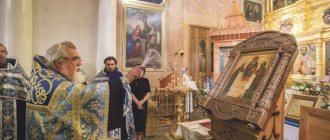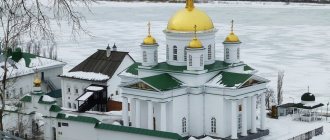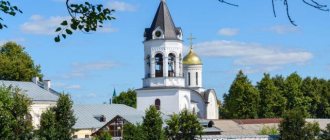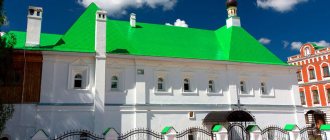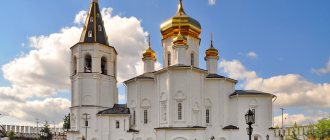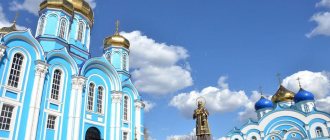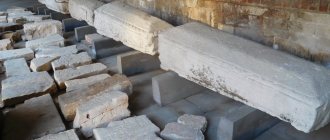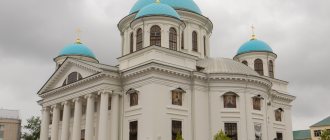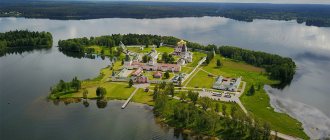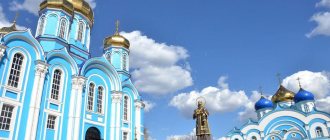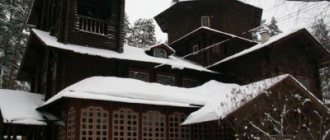Mir
Russia Republic of Tatarstan Kazan Temple of the Kazan Icon of the Mother of God (Kazan) Map is loading…
{"format":"leaflet","minzoom":false,"maxzoom":false,"limit":50,"offset":0,"link":"all","sort":[""], "order":[],"headers":"show","mainlabel":"","intro":"","outro":"","searchlabel":"\u2026 \u0441\u043b\u0435\ u0434\u0443\u044e\u0449\u0438\u0435 \u0440\u0435\u0437\u0443\u043b\u044c\u0442\u0430\u0442\u044b","default":"","import-annotation":false,"width ":"auto","height":"350px","centre":{"text":"","title":"""link":"""lat":55.8129339999999984911482897587120532989501953125,"lon": 49.20609999999999928377292235381901264190673828125,"icon":""},"title":"","label":"","icon":"","lines":[],"polygons":[],"circles":[ ],"rectangles":[],"copycoords":false,"static":false,"zoom":8,"defzoom":14,"layers":["OpenStreetMap"],"image layers":[] ,"overlays":[],"resizable":false,"fullscreen":true,"scrollwheelzoom":true,"cluster":false,"clustermaxzoom":9,"clusterzoomonclick":true,"clustermaxradius":80, "clusterspiderfy":true,"geojson":"","clicktarget":"","showtitle":true,"hidenamespace":false,"template":"","userparam":"","activeicon": "","pagelabel":false,"ajaxcoordproperty":"","ajaxquery":"","locations":[{"text":"\u003Cb\u003E\u003Ca href=\"/palomnik/%D0% A5%D1%80%D0%B0%D0%BC_%D0%9A%D0%B0%D0%B7%D0%B0%D0%BD%D1%81%D0%BA%D0%BE%D0%B9_% D0%B8%D0%BA%D0%BE%D0%BD%D1%8B_%D0%91%D0%BE%D0%B6%D0%B8%D0%B5%D0%B9_%D0%9C%D0% B0%D1%82%D0%B5%D1%80%D0%B8_(%D0%9A%D0%B0%D0%B7%D0%B0%D0%BD%D1%8C)\» title=\»\ u0425\u0440\u0430\u043c \u041a\u0430\u0437\u0430\u043d\u0441\u043a\u043e\u0439 \u0438\u043a\u043e\u043d\u044b \u0411\u043e\u 0436\u0438\u0435\u0439\u041c\ u0430\u0442\u0435\u0440\u0438 (\u041a\u0430\u0437\u0430\u043d\u044c)\»\u003E\u0425\u0440\u0430\u043c \u041a\u0430\u0437\u0430 \u043d\u0441\u043a\ u043e\u0439 \u0438\u043a\u043e\u043d\u044b \u0411\u043e\u0436\u0438\u0435\u0439 \u041c\u0430\u0442\u0435\u0440\u0438 (\u041a\ u0430\u0437\u0430\u043d\u044c )\u003C/a\u003E\u003C/b\u003E\u003Chr /\u003E\u003Ca href=\»/palomnik/%D0%A1%D0%B2%D0%BE%D0%B9%D1%81%D1% 82%D0%B2%D0%BE:%D0%90%D0%BD%D0%BD%D0%BE%D1%82%D0%B0%D1%86%D0%B8%D1%8F\" title= \u0421\u0432\u043e\u0439\u0441\u0442\u0432\u043e:\u0410\u043d\u043d\u043e\u0442\u0430\u0446\u0438\u044f\"\u003E\u0410\u04 3d\u043d\u043e\ u0442\u0430\u0446\u0438\u044f\u003C/a\u003E: »'\u0425\u0440\u0430\u043c \u041a\u0430\u0437\u0430\u043d\u0441\u043a\u043e\u04 39\u0438\u043a\u043e \u043d\u044b \u0411\u043e\u0436\u0438\u0435\u0439 \u041c\u0430\u0442\u0435\u0440\u0438"' - \u043f\u0440\u0430\u0432\u043e\u0 441\u043b\u0430\u0432\ u043d\u044b\u0439 \u0445\u0440\u0430\u043c \u0432 \u041a\u0430\u0437\u0430\u043d\u0438. \u0413\u043e\u0434 \u043f\u043e\u0441\u0442\u0440\u043e\u0439\u043a\u0438: 1829 \u0433.","title":"\u0425\u0440\u0430\u043c \u041 a\u0430\u0437 \u0430\u043d\u0441\u043a\u043e\u0439 \u0438\u043a\u043e\u043d\u044b \u0411\u043e\u0436\u0438\u0435\u0439 \u041c\u0430\u0442 \u0435\u0440\u0438 (\u041a\ u0430\u0437\u0430\u043d\u044c)","link":"","lat":55.8129339999999984911482897587120532989501953125,"lon":49.20609999999999928377292235 381901264190673828125,"icon":""}],"imageLayers":[]}
55.812934; 49.2061
Russia, Republic of Tatarstan, Kazan, 1st Vladimirskaya street, 42
Kazan, Republic of Tatarstan420088
Russia
Telephone:
(843) 273-16-44, 273-16-14
Temple of the Kazan Icon of the Mother of God
- Orthodox church in Kazan. Year of construction: 1829
History[edit]
The Temple of the Kazan Icon of the Mother of God was built in the village of Tsaritsyno in 1825-1829. The construction was carried out at the expense of parishioners - peasants of the village of Tsaritsyno, the villages of Aki, Konstantinovka and Cheboksa.
In the 30s the temple was closed, but in 1945 it reopened. In 1940, the village of Tsaritsyno became part of the city of Kazan, so the temple, which reopened during the Great Patriotic War, became very popular among the townspeople.
In the 60s, the Church of the Kazan Icon of the Mother of God turned out to be very far from the city center, and it was decided to transform it into the Cathedral of the Kazan Diocese, and demolish St. Nicholas Cathedral. But these plans, fortunately, were not destined to come true. Since the church was built, it has remained virtually unchanged, neither externally nor internally, until today. The posts and fences, of course, have become rickety and aged, but they are still standing.
From the outside, the temple is very similar to the Trinity Cathedral of the Alexander Nevsky Lavra in St. Petersburg, only the size is several times smaller. The dome and its base, the proportions of the main parts of the building, the coloring - white and yellow - everything is almost the same.
Externally and internally - a striking contrast. Everything inside the temple is blue, like the sky. Everyone who comes here notes the extraordinary beauty and tranquility that the temple gives: the sky blue color, gilding, three-tier iconostasis, numerous candles that create a unique atmosphere - all this allows you to escape and indulge in the divine aura. At first glance, it may seem that people rarely come here. However, visitors are here all the time.
Story
The monastery was founded in 1579, the same year is the year the icon appeared. At that time, the eastern part of the city was destroyed due to a strong fire, and an image was found in one of the damaged courtyards. There is a legend that the Mother of God herself told people about the place where to look for the shrine, who appeared three times in a dream to the little daughter of a Novgorod nobleman, Matrona, who lived in Kazan. After the blessing of the Kazan Bishop Jeremiah was received, they began to look for the icon; soon the girl found her exactly where the Mother of God said in her dream. Later, Tsar Ivan IV issued a decree on the construction of the Bogoroditsky Monastery in the city. Tradition says that Matrona was chosen as the first nun of the shrine, who took monastic vows and began to be called Mavra.
Subsequently, the icon was repeated a huge number of times, but the original, which stayed in the Kazan Cathedral for a long time, made the monastery a widely known place.
The shrine was under the patronage of Tsar Ivan IV, who spared no expense on it: everyone knew about the luxury and rich decoration of the monastery; there were no equals to this place in those days. According to some reliable information, donations from famous people, religious processions and many pilgrims who came to the monastery to pray over the holy icon brought 70% of all income to the city treasury.
In 1590, a stone cathedral was built, and the icon was then moved there. After two centuries, where the temporary structure was located, a new temple was erected in honor of the icon of the Mother of God. The eminent architect I. Starov was involved in the creation of the architectural design project, embodied in the classic style. The total height of the shrine was 44 meters. The cathedral was decorated with five hemispherical domes and three huge pediments, which had columns on each side, except for the altar.
In the spring of 1722, Peter I visited the shrine, and 45 years later, Catherine II visited the monastery, who presented the Kazan Icon and the Icon of the Savior, which was located here, with two crowns with diamonds.
Monastic buildings also included the St. Nicholas Church, rebuilt at the beginning of the 19th century, and the Holy Cross Church, which was supposed to replace the St. Sophia Church. Both buildings were located north and south of the cathedral. As a result, the St. Sophia Temple was not destroyed, but a new one was simply added to it. The St. Nicholas and Rector's Cathedrals, erected in a semicircle, served as the completion of the overall ensemble. Each of them had one large hemispherical dome, the buildings were built in the classicist style. One of the most ancient structures of this ensemble, in addition to the St. Sophia Church, includes a 55-meter bell tower.
In the summer of 1904, the pristine icon was stolen from the Mother of God shrine; now its whereabouts and fate are unknown. After some time, as a gift from the Patriarch of Constantinople, another icon of the Mother of God, called the “All-Blessed”, was placed in its place.
At the beginning of the 20th century, an underground temple was built in the dungeon of the shrine at the expense of Grand Duchess Elizabeth Feodorovna. By the beginning of the revolution, the place was the most wealthy and equipped in the entire Kazan diocese. Candles were produced here, there was a workshop for decorating things with gold and a neat workshop. The vast territory included an apiary and an incredibly beautiful orchard.
The monastery continued to expand; during the revolution in the country, it could already boast of 500 nuns living in it. In the years before the revolution, many august persons were honored to visit this place.
© Ilmira
After the revolution, holy places began to close en masse. The authorities decided to close the Kazan Kremlin and all its churches, while the Bogoroditsky Monastery gathered under its roof all the main shrines of the city, among which were the relics of saints. To preserve the building, an Orthodox community was registered in it, but later it was moved to the Peter and Paul Cathedral. From that moment on, the temple began to be destroyed.
The living quarters were given to student dormitories, which led to a deterioration in the condition of the buildings: some doors and windows were broken, staircase steps and railings were used as firewood, most monuments and sculptures were destroyed. The bells were removed from the bell tower, and the main cathedral was blown up in 1931 by decision of the authorities.
For some time, a film studio was built in the monastery courtyard, but the project was not completed. A tobacco factory was installed in buildings that were empty, and new residential buildings began to be built on the site of the monastery cemetery. During the Great Patriotic War, the Church of the Exaltation of the Holy Cross was completely refurbished, populating it with people, which led to its final ruin.
© Ilmira
How to get there[edit]
Address:
Republic of Tatarstan, Kazan, village. Tsaritsyno, st. Vladimirskaya 1st, 42.
Telephone:
(843) 273-16-44, 273-16-14
Directions: exit from the central part of Kazan along Ershova Street, at Sovetskaya Square turn right onto Academician Gubkin Street. Go straight through the intersection with Pobeda Avenue (Southern Highway) and enter the village of Tsaritsyno. Following the change in direction of the road, make a zigzag left-right and approximately 500 meters after the intersection with Pobeda Avenue there will be a church on the left side of the road.
Divine services in the Kazan Mother of God Monastery
The holy monastery is extremely valued by Orthodox people. Every year thousands of Christians come here who want to join the great. The restored Church of the Exaltation of the Cross welcomes everyone on its territory; everyone here can venerate the Shrine.
Schedule of services
A list of icons can be found on the second floor of the cathedral on the right side of the church, if you stand facing the iconostasis. In addition to her, the place is also the custodian of another shrine - an ark with particles of the robe of the Most Holy Mother of God and particles of the relics of other saints are placed here.
The temple grounds include a chapel, a belfry temporarily located on the ground near the entrance, and a hotel for tourists and pilgrims.
What is a temple
Each person has a different attitude towards faith and churches. In order to understand why a temple is needed, you need to know its purpose. Most often, people turn to the Most Holy Theotokos when a misfortune has occurred and help is needed.
Note. There are churches in every city - Moscow, Tula, Kazan, Reutov, in any church you can pray near the icon of the Mother of God or St. Matrona.
Regardless of whether a person goes to church or not, this building is holy for everyone and represents a connecting link between the believer and God. That is why God's law and worship are the main things in the life of a believer. "Temple" translated from Slavic means "house". Previously, in ancient times, a large number of townspeople gathered in temples. All ceremonies and rituals were performed in them. Over time, the word “temple” began to mean only a building in which holy rites were performed.
Holy Kazan Church (Syktyvkar)
Now the Kazan Church is a religious building, which is a shrine where services are held. The service schedule can be found on the official website tatmitropolia.ru. There is also a contact, phone number, address and time of main services. The Kazan Temple occupied not the last place in the Moscow, Kolomna, Petrovsk, Ramensk, and Peter and Paul dioceses. In addition to worshiping the leading saints, people also turn to the holy apostles Peter and Paul.
In order for a visit to the temple to be correct, it is necessary to understand what can be done in it and what cannot be done.
Notes
- [rpsc.ru/docs/postanovleniya-coborov/postanovleniya-osvyaschennogo-sobora-russkoy-pravoslavnoy-staroobryadcheskoy-tserkvi-sostoyavshegosya-v-grade-moskve-1517-oktyabrya-2008-gn-st/ » Resolutions of the Consecrated Council of the Russian Orthodox Old Believers Church (held in the city of Moscow on October 15-17, 2008 n.st.) Russian Orthodox Old Believers...]
- [rpsc.ru/docs/postanovleniya-coborov/postanovleniya-osvyashchennogo-sobora-russkoj-pravoslavnoj-staroobryadcheskoj-cerkvi-sostoyavshegosya-v-grade-moskve-18-20-oktyabrya-2011-gn-st/ » Resolutions of the Consecrated Council of the Russian Orthodox Old Believer Church (held in the city of Moscow on October 18-20, 2011 n.st.) Russian Orthodox Old Believer Church.]
With an icon of the Mother of God around his neck
To get to the Annunciation Cathedral, you had to arrive long before 7 am - the time when the service began. A column of priests with banners was already lined up at the temple, led by a truck on which the bells were placed. Most people were waiting outside. Volunteers, dressed in green vests with the inscription “Orthodox Youth of Tatarstan” on the back, handed out masks and icons of the Virgin Mary to everyone, which could be hung around the neck like a badge. Everyone was in high spirits, people congratulated each other on the holiday, wondering whether they would be able to venerate the shrine today.
After a short service, the miraculous icon, framed by a wreath of fresh flowers, was carried out of the Annunciation Cathedral on a stretcher. The police and National Guard immediately stood on both sides of her. The crowd of thousands closed in, and the procession headed towards the Spasskaya Tower. The women's choir sang a prayer, which was echoed by the believers. The smell of incense filled the air, which was used to fumigate the miraculous image.
After a short service, a miraculous icon framed with a wreath of fresh flowers was carried out of the Annunciation Cathedral on a stretcher.
When leaving the Kremlin, the procession was greeted by the ringing of bells from the belfry of the St. John the Baptist Monastery. Passers-by stopped, crossed themselves, and took photographs. Even the law enforcement officers couldn’t resist filming what was happening on their phones.
The religious procession headed down to the Taynitskaya Tower. There were so many people that it was impossible to see the tail of the procession. We had to walk quite quickly, which is why many lowered their masks. “Good people, wear masks!” - Orthodox volunteers exclaimed every now and then.
The head of the column went far ahead, and the priest, who was monitoring the order of the ranks, was forced to stop it using the loudspeaker and hurry up the tail. “Fathers, hurry up!” - he commanded his colleagues carrying the icon. At the embankment, both parts closed and then moved on in an orderly column.
The passage to the Bogoroditsky Monastery was blocked, people were released in small groups
